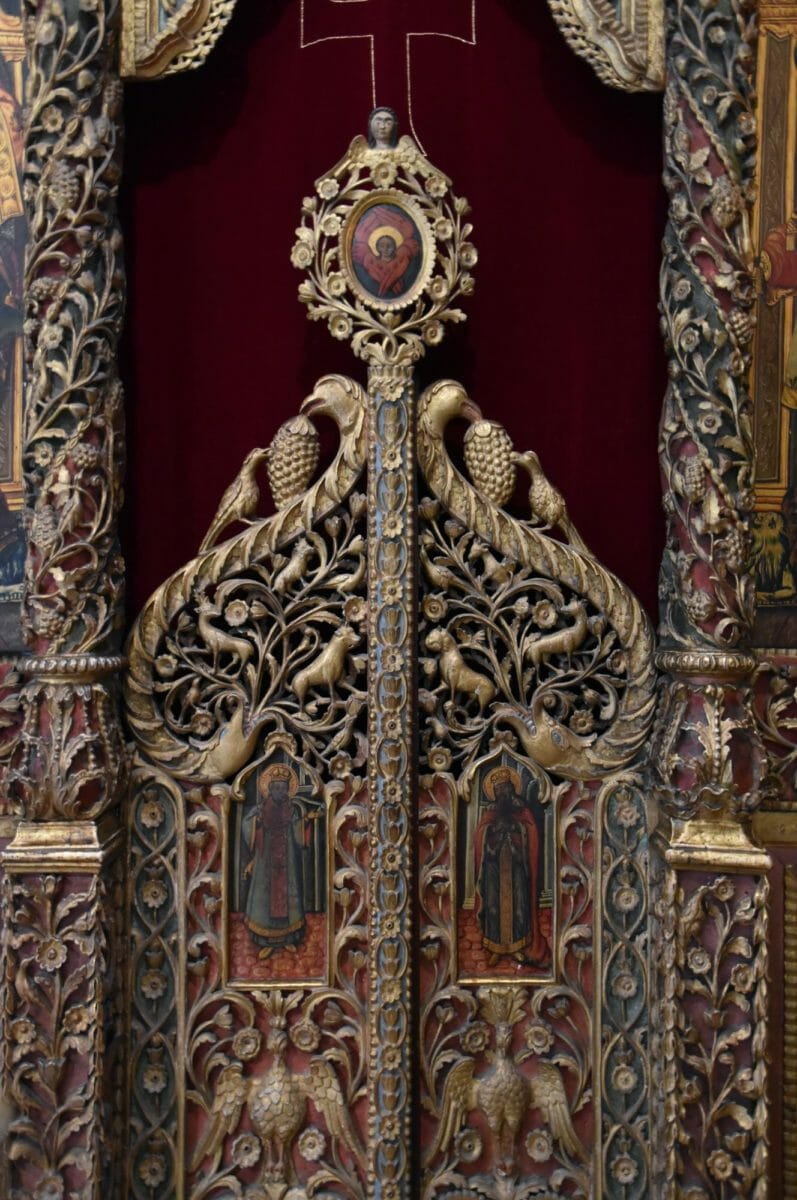Similar Posts
The iconostases of Dečani Monastery are of such overwhelming interest that they warrant their own post in my photojournalism series. Dečani was built in 1327-1331. Among the hundreds of monasteries built by the medieval kingdom of Serbia, it was the tallest and grandest. Today, it is also, miraculously, the best preserved, with an extraordinary collection of artworks and treasures.
The central iconostasis is of the templon-screen type – it consists of stone columns and a stone lintel. This type of altar screen emerged in early Christian times and remained ubiquitous for about 1000 years. It gradually transformed into an iconostasis in the Middle Ages when icons were placed atop the lintel, and then between the columns. By the 15th century, the icons had become the primary focus of the screen, and the stone structure had been rendered obsolete. Iconostases were then built completely of wood.
Dečani’s 14th-century templon screen gives us a unique glimpse into the transitional screens of the high Middle Ages. It is the only templon screen in the world that remains fully intact, containing even its original 14th-century icons. To see icons of this age and quality not in a museum, but in their original position for which they were made, in daily liturgical use, is truly a wonder.
An overall view showing the huge Golgotha crucifix atop the templon, as well as the Holy Doors, both of which date from the Ottoman period.
The cross atop the Holy Doors. Remarkably, the cross takes the 6th-century form, known as the ‘Justinianic’ or ‘serifed’ cross – a beautiful connection to ancient Byzantium.
To the left and right of the central templon are two tall and ornate wooden iconostases – for the side chapels of Saint Demetrius on the left and Saint Nicholas on the right. These are among the most impressive works of the Balkan late-Baroque – a folk tradition of beautiful craftsmanship that flourished in the late Ottoman period. The screens were carved by Trajko Rekalija, and the icons painted by Simeon and Aleksije Lazović of Bijelo Polje. They were completed in 1818.
These wonderful screens were crafted five centuries after the church was built. Nevertheless, it is hard to picture Dečani without them. Their rich carved texture and shimmering polychrome offer the perfect complement to the ponderous stillness of the ancient stone walls and blue-toned frescoes. When visiting Dečani, I was struck by the the views of these iconostases between the stone pillars. It seemed the perfect aesthetic climax – long vistas between massive columns and dimly visible ancient frescoes – and beyond, Paradise! A wall of sculpted gold and fiery saints catching sunbeams from the side-aisle windows. It was a like a distant glimpse of the walls of Heaven and the pearly gates.

The iconostasis of St. Nicholas, showing the Theotokos and Christ with exceptionally royal trappings – rod and orb, crowns, baroque throne, and porphyry-colored background.

The iconostasis of St. Nicholas – Detail of the deacon’s door, painted with Saint Michael the Archangel. Remarkably, among all three iconostases, this is the only deacon’s door in the entire church.

A former element of Decani’s iconostases can be seen in monastery refectory. This unique carved screen, which never contained icons, used to stand to stand in front of the central templon. It was perhaps an effort to dress up the simple medieval stonework with more fashionable wood carving. It was apparently never considered very successful, as it was not gessoed and gilded like the side-chapel iconostases, and was eventually removed from the church.
This post is part of a series. Previous posts:
Iconostases in Balkan Churches – Part 1: Serbia
If you enjoyed this article, please use the PayPal button below to donate to support the work of the Orthodox Arts Journal. The costs to maintain the website are considerable.













Andrew, these images are exquisite. Thank you for this special viewing of Decani.
Shockingly thought provoking. What a treasure. Grateful for this glimpse. Inspiring.